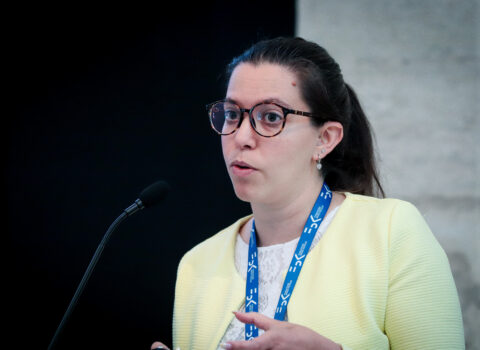
Mission for health: promoting health in different contexts around the world
A summary of the proceedings and a video interview with the speaker of the "Global Faith-Based Healthcare Systems" conference, which starts with a metaphor about redwood trees to talk about how health is promoted within the various socio-cultural contexts.
The meeting of the “Global Faith-Based Healthcare Systems” project , focusing on faith-based healthcare systems and organizations that address global health operating in different contexts around the world, was held at FBK’s Via S. Croce premises Feb. 14-16, 2024. The project – conducted in partnership between Georgetown University (Washington, D.C.) and FBK’s Center for Religious Science since 2017 – starts from the question of how the so-called “mission for health,” i.e. the commitment to promote health, is lived out today, particularly in the contexts of the world that are most precarious and unstable both in terms of population health conditions and with respect to their health systems.
Attendees included academics, faith-based organizations and local communities, which are more closely involved in the care and assistance of those who, while in need, would not have resources to receive care. Faith-based organizations respond to these needs and do so by targeting their actions in such a way that they can intervene – at least in part – even for situations that would otherwise remain uncovered.
In recent years and during the pandemic, the work of faith-based organizations has been widespread and their contribution has received institutional recognition, including from the World Health Organization, which established a Faith Network during the emergency to enable the involvement of faith-based organizations, as well as faith leaders and communities with respect to health and treatment issues.
The meeting explored in depth the role of global health services, technology development in different settings and systems around the world, the contribution and activities carried out on a local and global scale, the value of the work of those who work in such contexts and those who coordinate activities, while at the same time trying to understand how the “human factor” still remains and represents a challenge to reflect on and strive for. Gathering and paying attention to the dimensions of spirituality, suffering, resilience and compassion is fully – and still today – part of the attitudes that it is important, perhaps necessary, to develop in order to deal with illness and the critical phases of human existence with respect to which medicine intervenes and to deal with which health care is intended.
In this framework, the study and development of technologies represent and bring – at the moment and in perspective – a fundamental contribution, which can also be thought of and specifically designed as the form of a technocharity, as Massimo Leone has defined it, or as an advanced form of solidarity and development, mediated also – but not only – by technologies, as Roland Benedikter (Eurac, Bolzano) has interpreted them. In this sense, education and cultures still seem to play a great role in promoting health and ensuring the sustainability of interventions and systems: this is why it is important and necessary to involve people working in different contexts, in order to be more inclusive, attentive to the specificities of contexts and aware of the important contribution that traditional medicine can bring. A spiritual component emerges frequently, and increasingly in health: it helps to think about people in their reality, in their culture, and thus to respect them in their dignity as well.
A metaphor by Bette Jacobs served as a thread running through the proceedings: redwoods – among the oldest trees on Earth, capable of withstanding adversity but with a strong point of fragility due to the fact that their roots are not deep – compensate for this vulnerability by being under the ground strongly interconnected and interdependent with each other. This inter-connectedness may well represent the challenge that we must meet if we are to ensure not only our survival, at present and in the future, but also the possibility of ensuring the development and sustainability of the diverse communities that inhabit the world.


